Adding any pad (such as a sheepskin) underneath the saddle will change the fit. If you have a perfectly fitted, wool flocked saddle, you may not need to add a pad as wool panels have shock-absorbing properties. Although, if you have a have a foam flocked saddle, your horse may benefit from adding a shock-absorbing pad.
Saddle Fitting Guide - English & Western Saddles
What type of saddle is the best option for you? Our saddle fitting guide will help you decide which style of saddle suits your riding needs and help you understand the basics of how to fit a saddle.
Selecting a Saddle Type
Saddles for English riding can generally be categorized into three basic types, dressage, all-purpose, and jumping. For Western riding, you can find categories such as trail, ranch, performance, and barrel racing. The goal of this saddle fitting guide is to help you determine which model will best fit both you and your horse. Please refer to the sections below for more information on each saddle type.
The manner in which the saddle is structured has to accommodate both the horse and the rider. Because both horse and rider come in all shapes and sizes, finding a saddle that is a good fit for both can sometimes be tricky. Fortunately, there are many saddle options on the market today. With all of the technical improvements in saddle making, most riders should be able to find a saddle to fit themselves and their horse without resorting to custom options or the use of special pads.
SmartPak does not have a saddle fitter on staff and does not provide custom saddle fitting services. However, we’ve picked our selection of saddles from reputable saddle-makers whom we believe make great products in a range of sizes to give you and your horse the best fit and most comfortable ride.
Basics of Saddle Fit for Horse & Rider
Fitting the Horse
The basics of fitting a saddle to the horse are fairly consistent for both English and Western saddles. General saddle fit guidelines for the horse include:
- The tree or bars should provide adequate protection to the horse’s back and be designed to place the rider in the best balance for their style of riding.
- The panels underneath the saddle should conform to and aid in protecting the horse’s back.
- The girthing system should be located in a manner to effectively hold the saddle on the horse.
- The seat style should provide support for the rider without being overly restrictive.
Saddle trees or bars come in various widths and may have special features. In general, horses with a wider build need wider trees or bars. The directions below on evaluating saddle fit will explain the basics on how to tell if the tree size is correct for your horse.
Fitting the Rider
Saddles come in a variety of seat and flap or fender sizes and designs. It is important to find the correct seat and flap or fender size and shape that will support the correct and safe balance of the rider in the saddle. Determining the seat size varies depending upon the type of saddle, and in the case of dressage saddles, on the depth of the seat. In the case of a western saddle, you want to be sure you have 4” between the front of your body and the swell of the saddle.
The build of the rider will also affect the style of saddle (within a saddle type) that will fit the best. There will also be personal preferences for the type, durability, and color of the leather.
How to Fit a Saddle Correctly
When you're trying saddles at home, have your horse on as level ground as possible. Start by putting the saddle directly on the horse’s back without any kind of saddle pad.
-
When you're trying saddles at home, have your horse on as level ground as possible. Start by putting the saddle directly on the horse’s back without any kind of saddle pad.

- Check to see that the pommel, gullet, or fork clears the horse’s withers by three finger widths.
- Check to see that the front of the saddle panels/fenders are behind the horse’s shoulder blades, allowing the motion of the scapula to swing.
- Check that the back of the saddle is not too long. If the saddle goes past the 18th vertebrae, it could potentially cause discomfort with the rider’s weight on the horse’s kidneys.
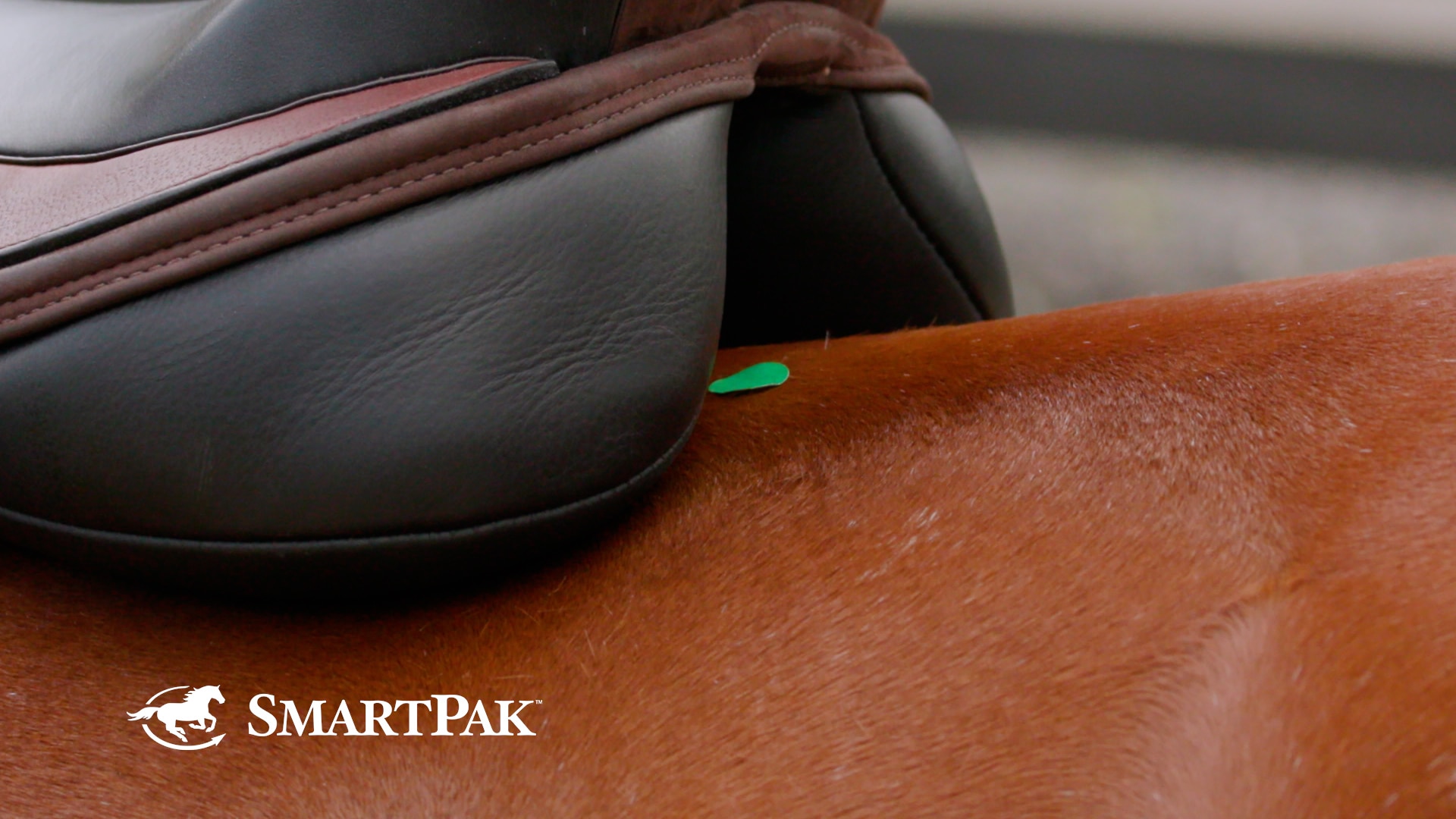
- Check the panels/fenders to see if they are touching equally along the length. If they touch in the front and back, but not in the middle it is called “bridging.” This can be fairly subtle to see and (if slight) may go away once the horse is warmed up. But it could be an indication that the paneling shape or length is not correct for that horse. This usually happens on a very short-backed horse or one that is hollow behind the withers or has a high croup.
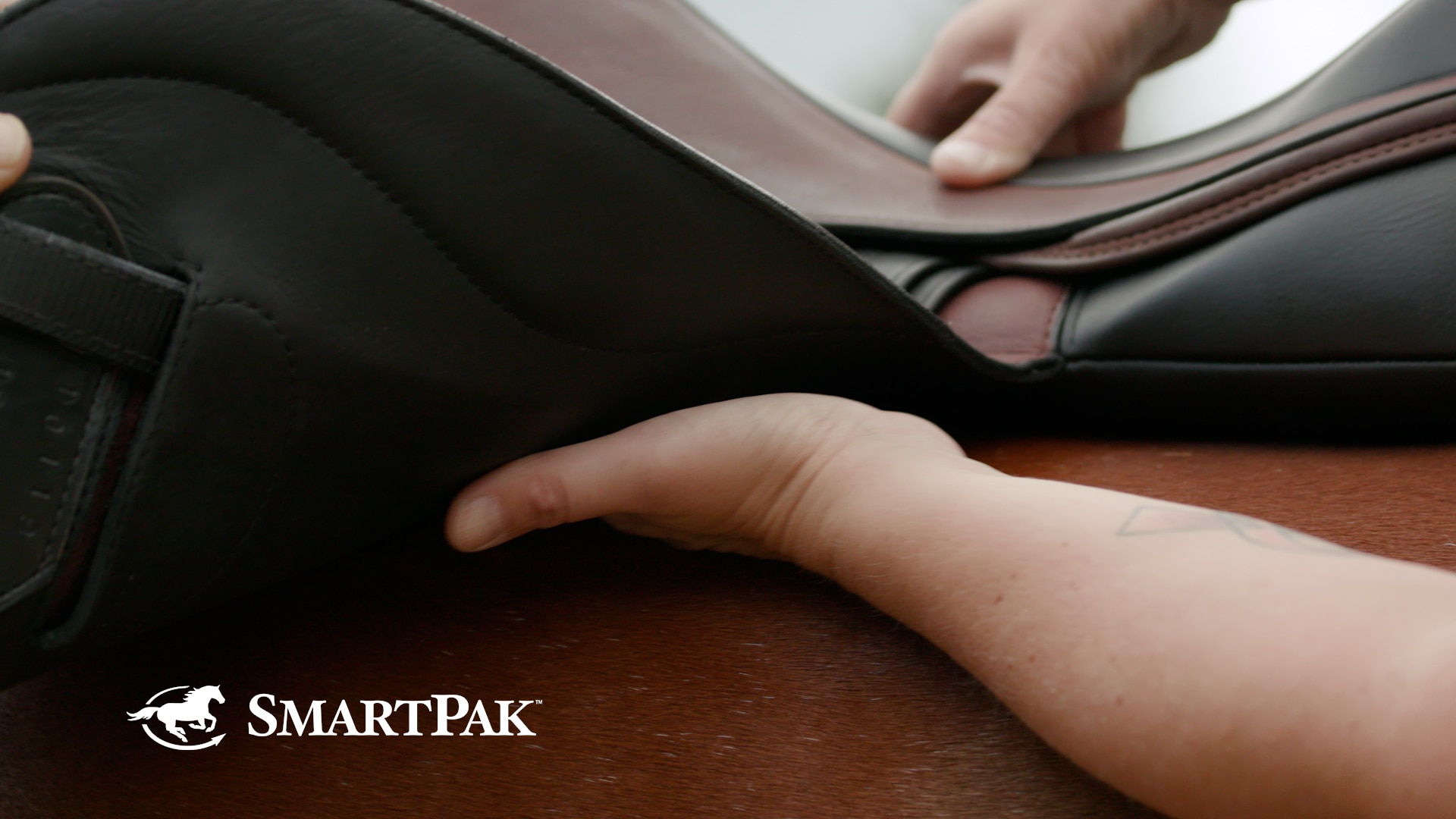
-
If the saddle meets the requirements, girth or cinch it up over a lightweight saddle pad.
- The lowest part of the seat should be in the middle of the saddle.
- The pommel, gullet, or fork should still easily clear the horse’s withers by at least the height of about three fingers. Yet, it should not be so high that the lowest point of the saddle is towards the cantle.
- The channel between the panels should provide sufficient width of about two fingers on either side from the pommel, throughout its length for the horse’s spine.
- The cantle should be level with or slightly higher than the pommel.
- Lunge the horse at all gaits to see if the saddle shifts forwards, backwards, or laterally. Check to see if the cantle tends to rock or bounce up and down at the trot. If any of these conditions are present, or if your horse is showing signs of discomfort (tail swishing, pinned ears, etc.) you may want to try another model.
-
If it still looks good, mount up, making certain that you are not pulling the saddle out of position in the process, and try it out at all three gaits.
- You should feel comfortable and well-balanced at all gaits. If not, you will need to determine whether the seat size is too large or small, whether the leathers or fenders are hanging in the appropriate place to allow you to balance correctly (this depends upon the type of riding you are doing), or other points of discomfort.
- Is your horse comfortable with you in the saddle? Is he moving freely in both directions?
- Ride in the saddle at least a couple of times prior to making a decision. If you and your horse are comfortable, you have made the correct selection. If not, try and analyze what doesn’t feel correct so that you can try another model or seat or tree size that might work better.
Saddle Fit Tips and Tricks
How to Tell When the Saddle Doesn’t Fit
A correctly fitting saddle will give your horse longevity with muscles and joints. Some of the most common signs your saddle doesn’t fit your horse correctly include:
-
The saddle is too far forward impinging on the horse’s shoulder.
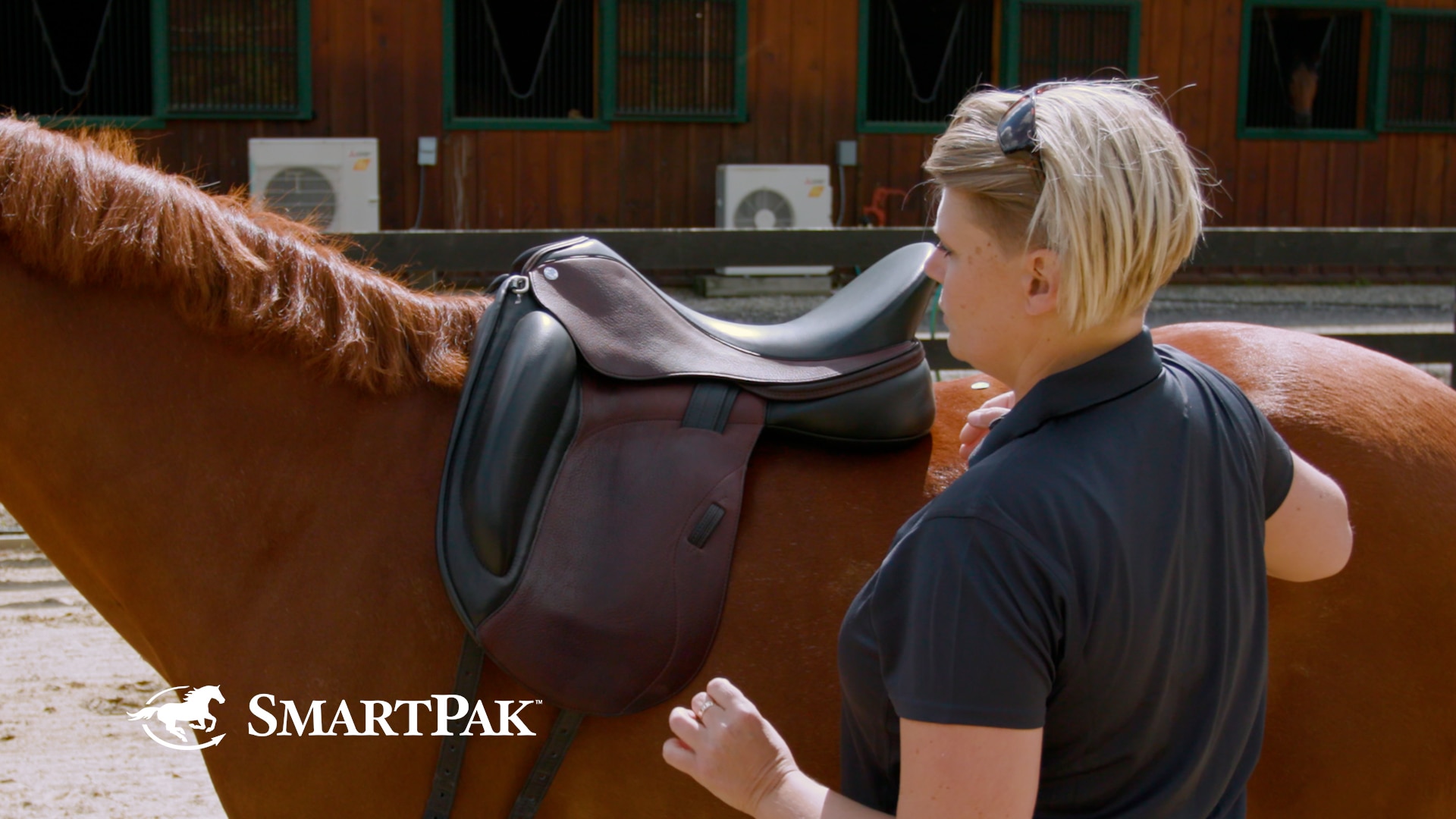
-
Saddle is too long, which could put the rider’s weight over the horse’s kidneys.
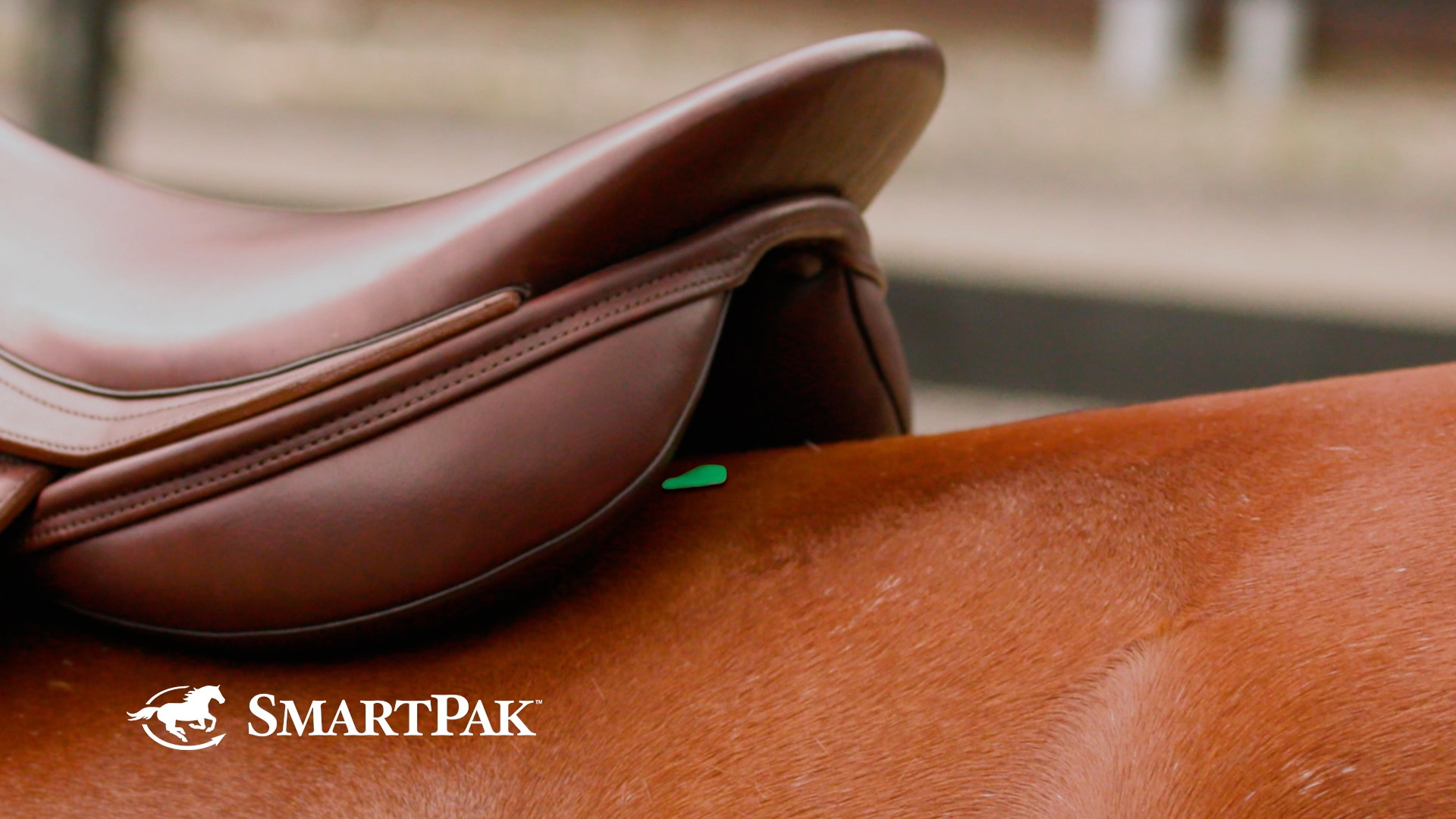
-
Saddle is too short, which looks like it’s uphill and causes the rider’s weight to be pushed to the back of the cantle.
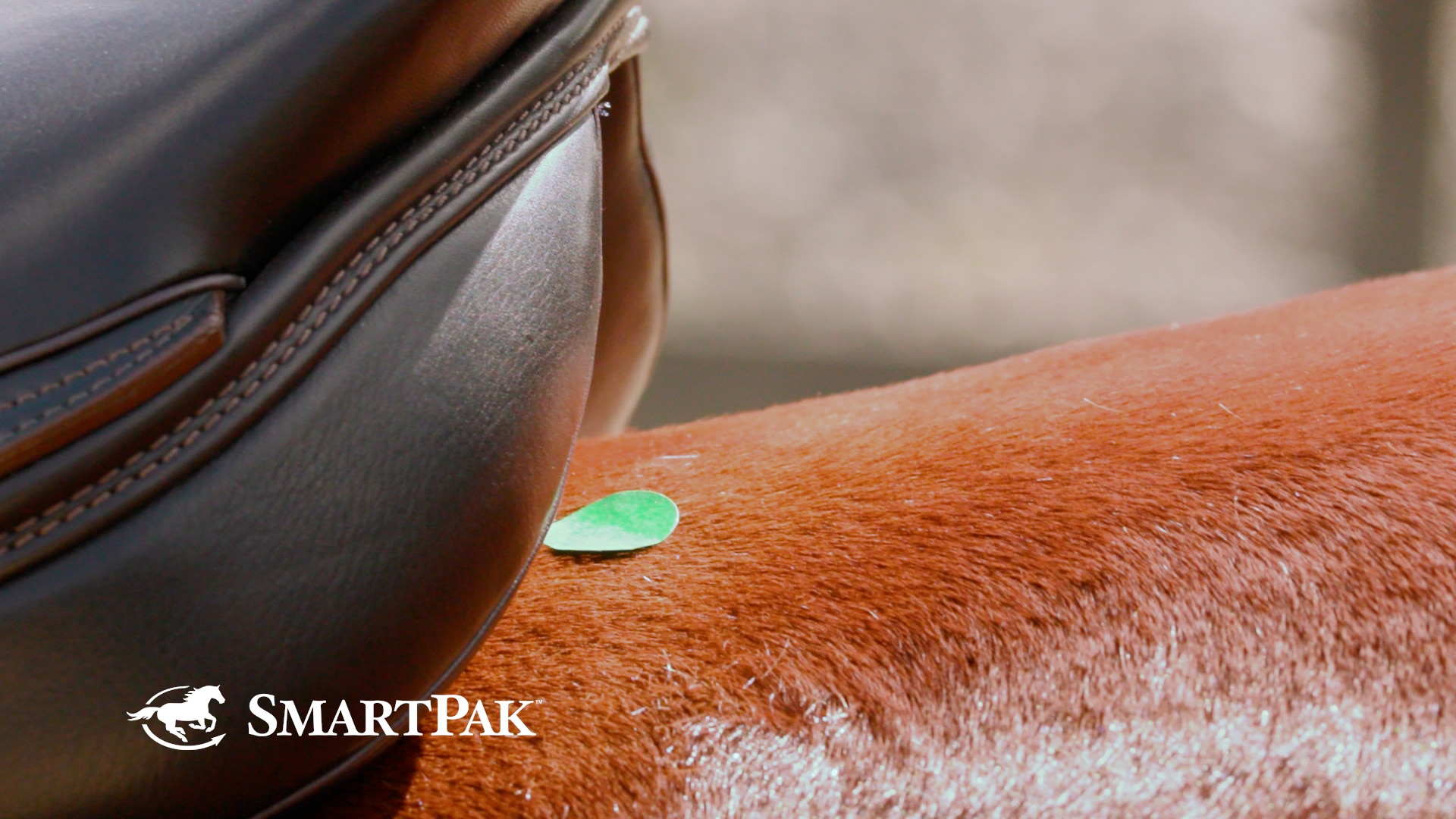
-
Saddle is too wide for the horse, causing a rocking motion as it’s low in front and high in back.
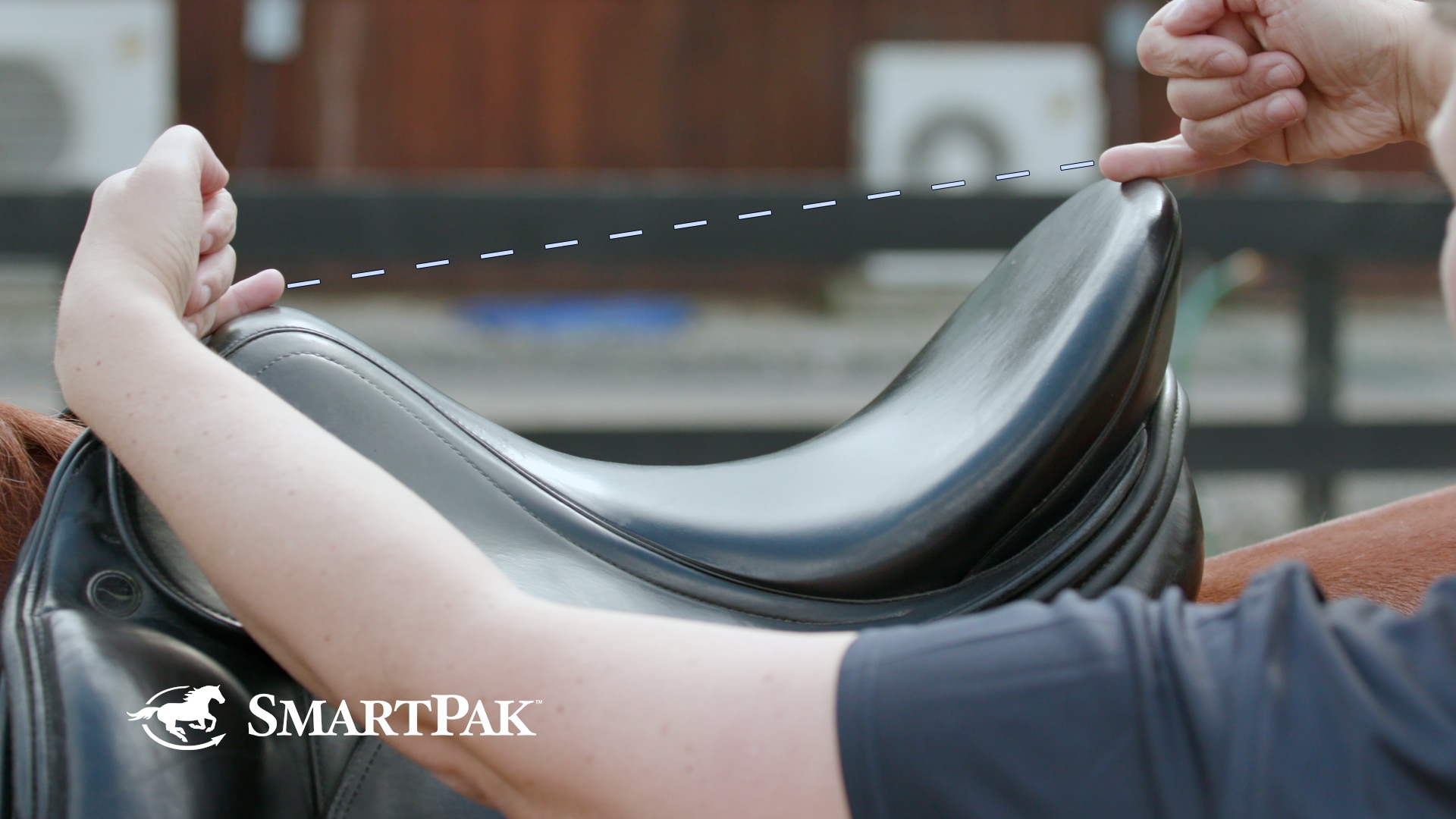
-
Not enough or too much clearance for the withers.
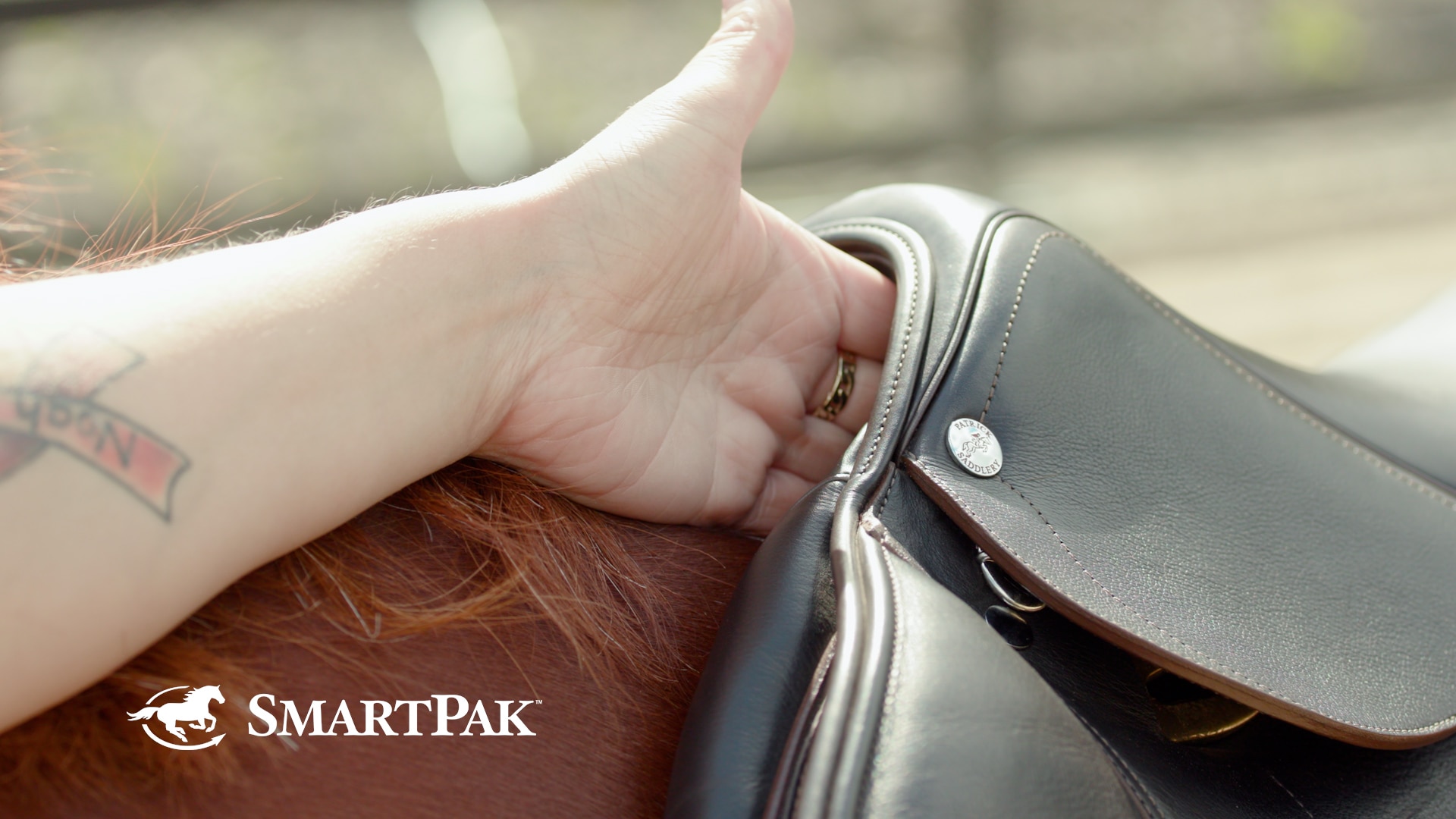
-
Bridging, causing four-point contact where the saddle makes contact at the front and back but not under the middle.
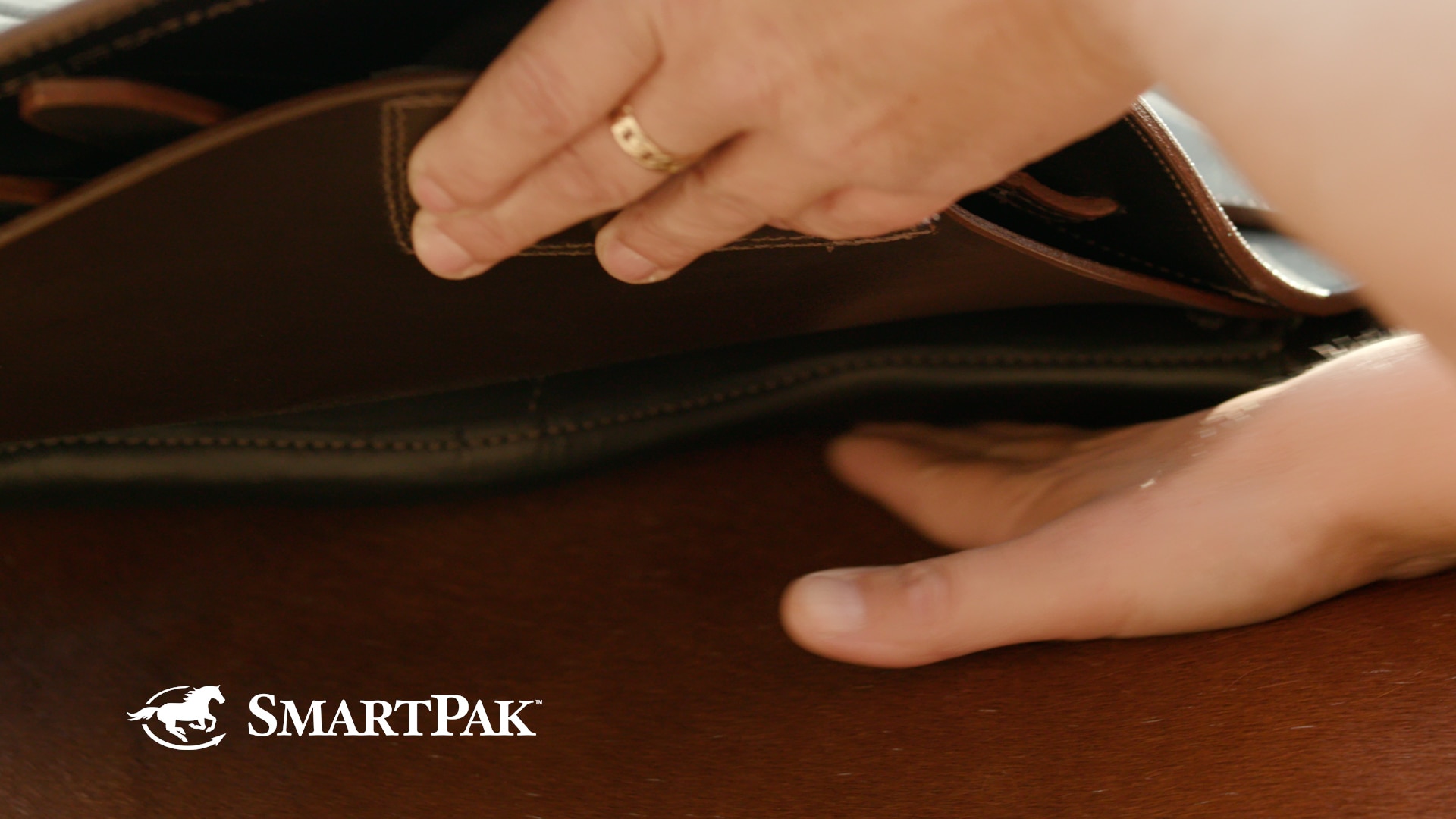
- White hairs, caused by uneven fit with too much pressure on the area.
Fitting a Dressage Saddle
The dressage saddle has undergone many design modifications in the past two decades. Saddle makers, in conjunction with top riders, have modified the materials and shape of the saddle trees to accommodate the shape and movement of the modern dressage horse. The purpose is to provide more freedom for the shoulders and ease of lateral bending.
Modifications have also been made to benefit the rider, such as:
- Construction of the seat varies from fairly open to very supportive.
- Flap shapes, padding, thigh blocks, etc. vary widely by brand and model to accommodate rider comfort and support.
- Choice of flap design, size, and placement of thigh supports, depth of seat, type of leather, aesthetics, etc. is very personal.
You may need to test ride in several options prior to deciding which saddle is right for you.
Parts of a Dressage Saddle
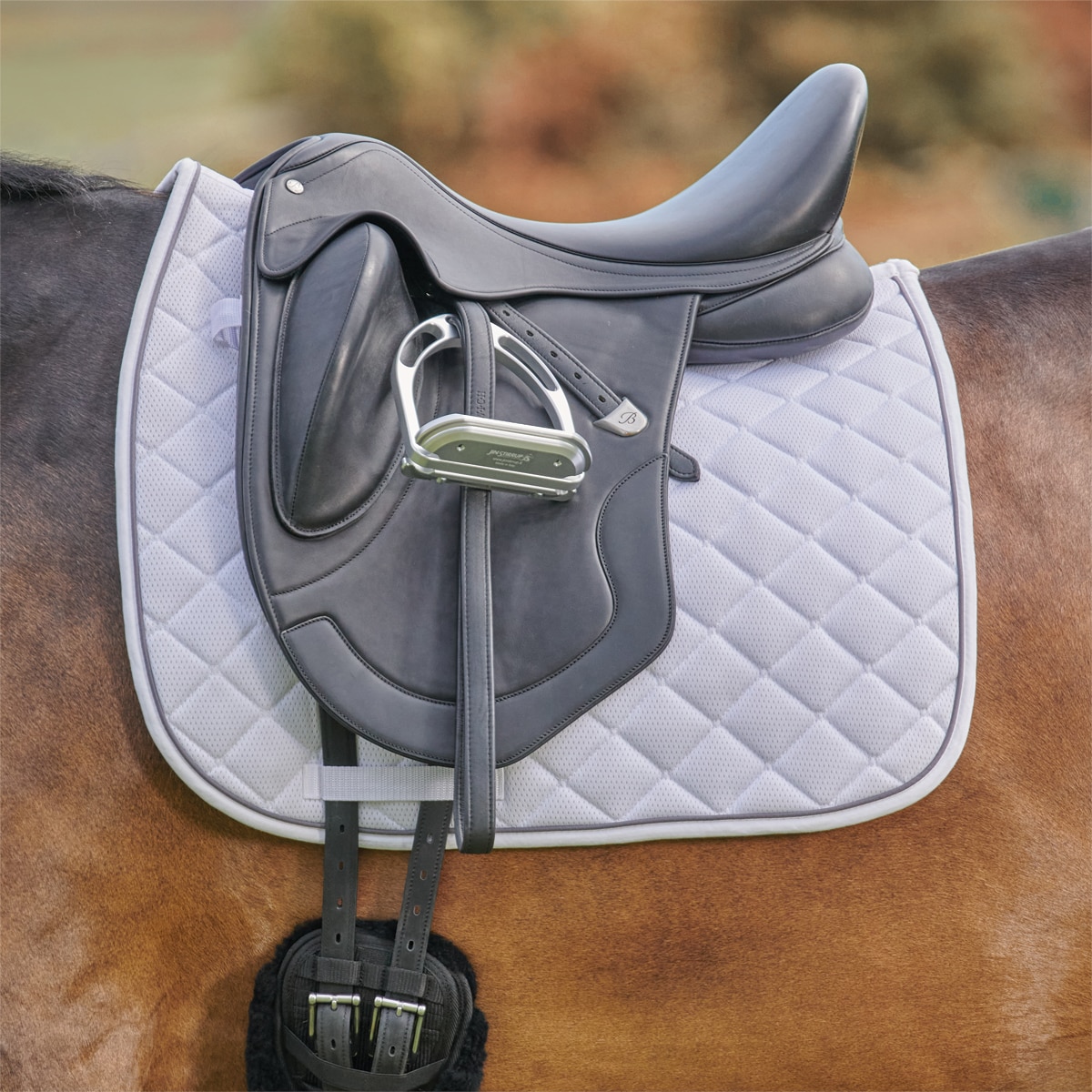
The saddle tree can be of reinforced wood or synthetic materials. The points of a saddle tree have also been re-designed so that they interfere less with the horse’s shoulders while still providing stability.
The stirrup bar has been extended or moved further under the leg to promote a more vertical leg position. A longer-legged person will usually need a longer bar, or one placed further back, than a short-legged person.
Panels, the padding underneath the seat, have been re-designed on many models to spread the weight of the rider over a broader portion of the muscling on either side of the horse’s spine. The central channel (gullet) between the panels has also been broadened to accommodate the broader backs of many warmbloods. While riders on Thoroughbreds or other narrower horses, for instance, may not necessarily look for that particular feature, it is important for any shape of horse have the panels rest on the muscle pads with sufficient clearance for the spine.
Panel shapes vary and may be gusseted or not. The length and shape of the panels, as well as the type of panel fill have a great deal to do with comfort for your horse and are worth spending some time studying.
Backs that are short, dip sharply behind the withers, rise to the croup, are very round or very flat etc. all need to be considered when determining the panel type best for the horse. Panels have traditionally been filled with wool flocking. However, the quality of wool flocking varies. Air, synthetic wool, and foam are all options.
Saddle Fitting for a Dressage Rider
Personal preference, as well as the rider’s experience level, length of leg, and pelvic bone width should be taken into consideration. There are many variations in the width of the twist, width of the saddle seat, amount of padding in, and depth of, the seat with new modifications appearing yearly.
There are an infinite variety of thigh blocks and padded flaps to provide support for the rider’s leg, and a variety of flap shapes, some requiring quite a straight leg. Yet others are relaxed a bit forward to relieve stress on the hips, a necessity for many riders. Some riders prefer a high level of support while others prefer more freedom to move their leg or their seat. This will affect whether you choose a deep or more open seat, more or less leg support, etc.
The width of the saddle flap should provide sufficient protection to the rider’s thigh and upper calf while applying the aids. The length should be sufficient so that the bottom of the flap does not catch on the top of the rider’s boot, yet not so long that the top of the stirrup is near or overlapping the flap. Usually, the bottom of the flap should not be lower than mid-calf with your foot in the stirrup.
Most saddle makers offer a “standard” length as well as “short” or “long.” Most standard length flaps are 16-18” (vertical distance from the bottom of the saddle bar to the bottom of the flap) depending upon the brand and model. However, depending upon the manufacturer, flap length may be available on special order from 13” to 19.” All saddles currently available at SmartPak have standard length flaps for that manufacturer and do vary by brand and model from 16-18.”
Fitting a Hunter Jumper Saddle
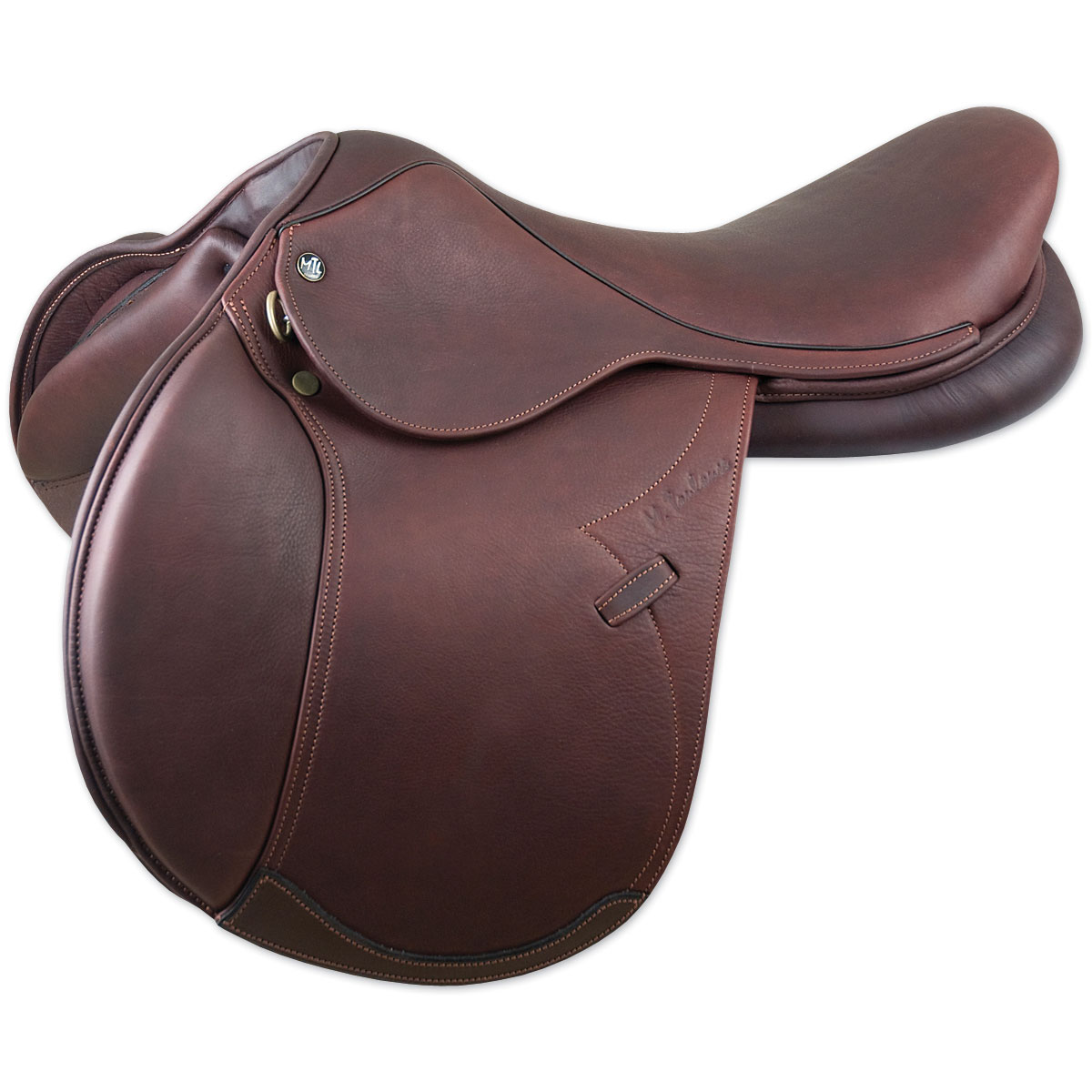
Jumping saddles have also been re-designed in the past couple of decades to improve comfort and balance for the rider as well as the comfort of the horse. Wider, thicker panels and improved gullet design provide more protection for the horse’s back. In addition, re-positioning the stirrup bar more forward allows the rider to balance properly over fences without having to move the saddle too far forward over the horse’s shoulder.
The angle of the flap, position of the flap padding as well as width and depth of seat vary from brand to brand. Some brands offer stitched-in or moveable knee and/or thigh blocks and some offer a soft, padded knee pad.
The amount of support desired may depend upon the purpose for which the saddle is intended, whether for jumping, eventing, or for hunter courses. The rider’s build and length of leg must be taken into consideration in selecting the appropriate seat size as well as flap length and position.
Fitting an All-Purpose Saddle
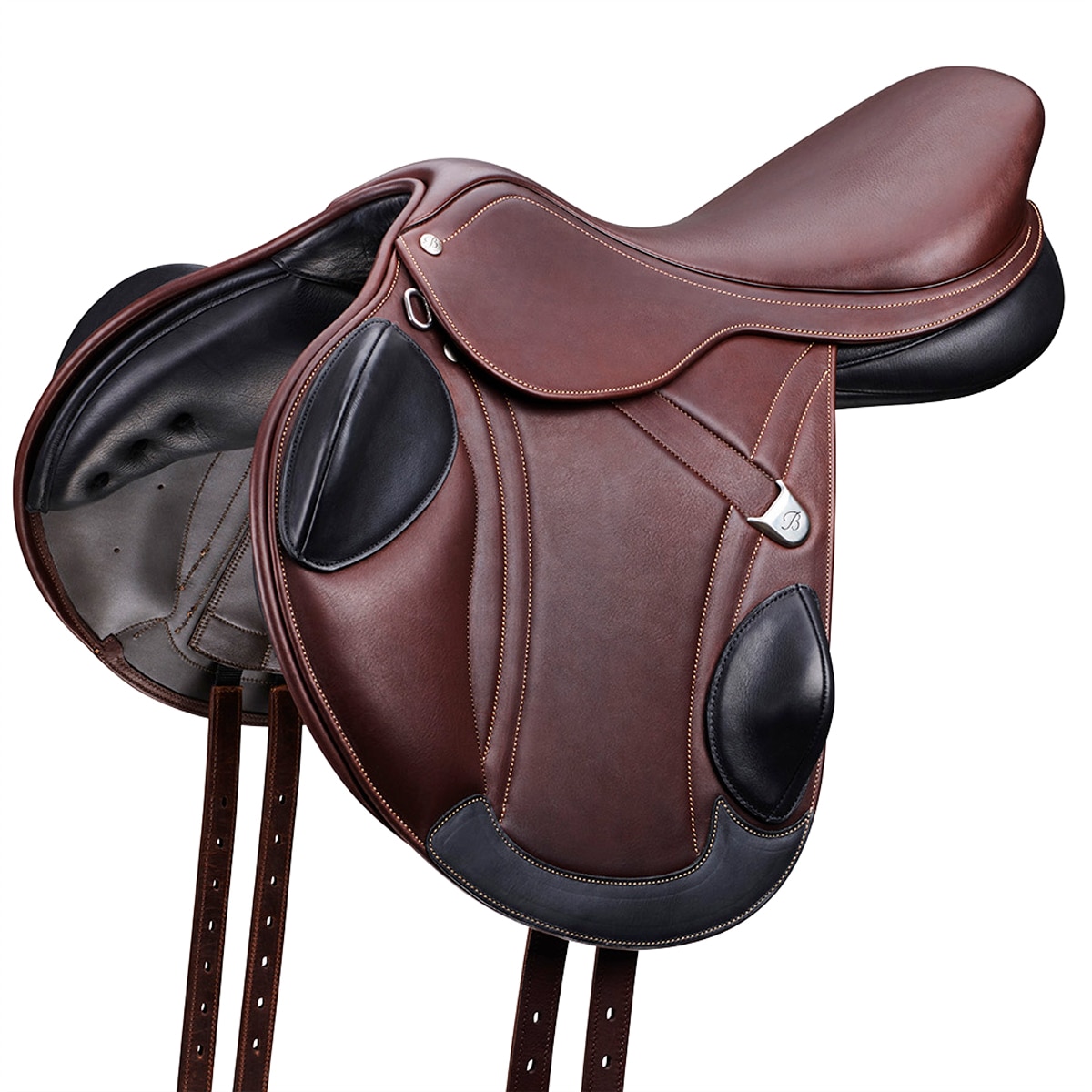
The all-purpose saddle is just that, a saddle modified to allow the rider to lengthen the stirrup and ride with a longer leg for lower-level dressage, and yet has enough of a forward flap to allow enough of a bend in the leg for jumping.
It is a fine saddle for trail riding and lower-level eventing. However, all-purpose saddles are not specialized in the positioning of the flap or stirrup bar or design of the seat to be really effective for a rider specializing in either dressage or jumping.
Children's Saddle Fitting
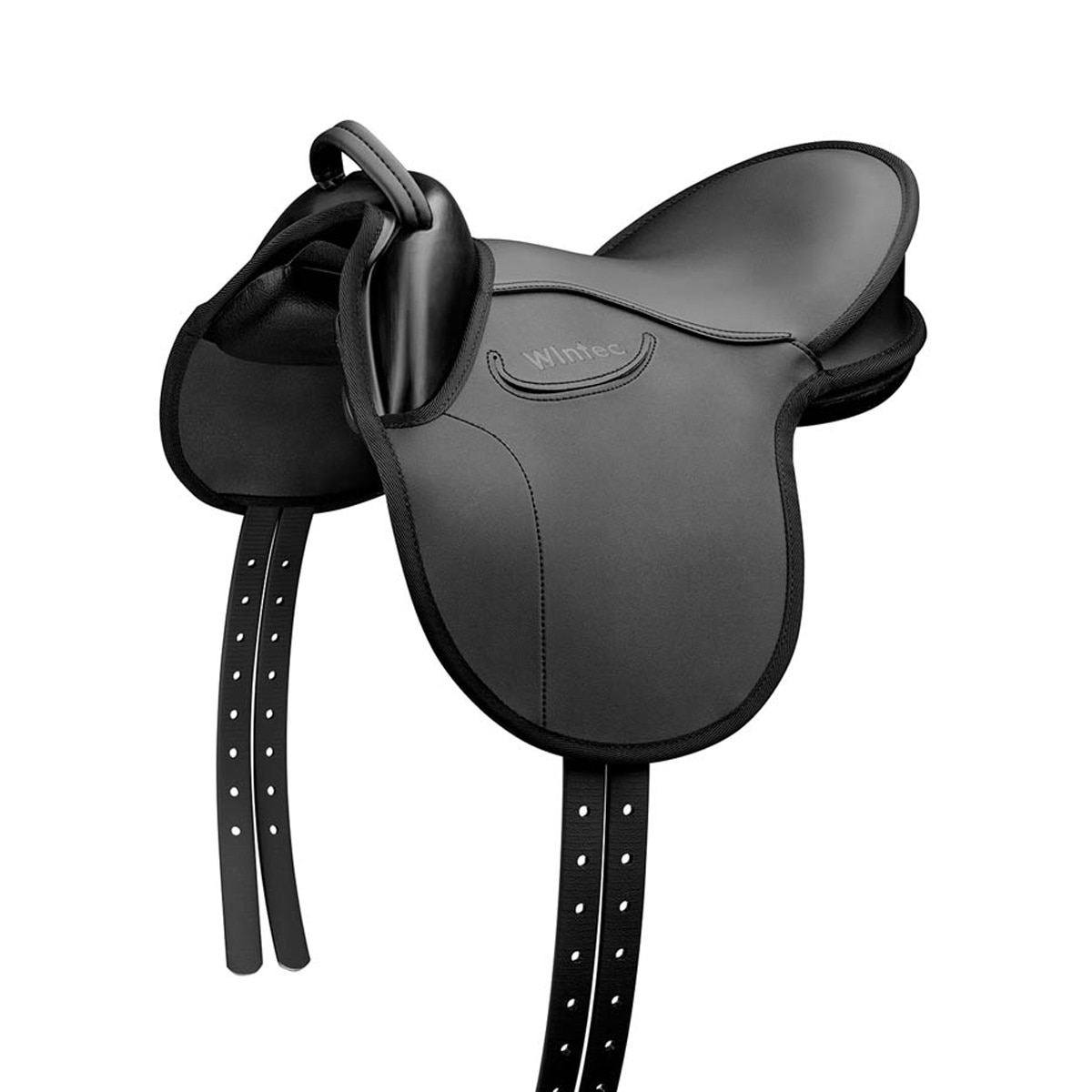
Several manufacturers carry saddle models that are specifically proportioned for the bodies and leg length of children. Generally, the seat size for a child is 15” or 16”, with a flap length proportioned according to the style of saddle, although some models may be as small as 13.”
Most children’s saddles are available in the wider tree needed to accommodate ponies. 42” or 48” leathers and 4” or 4 ¼” stirrups are suitable for most children.
Western Saddle Fitting
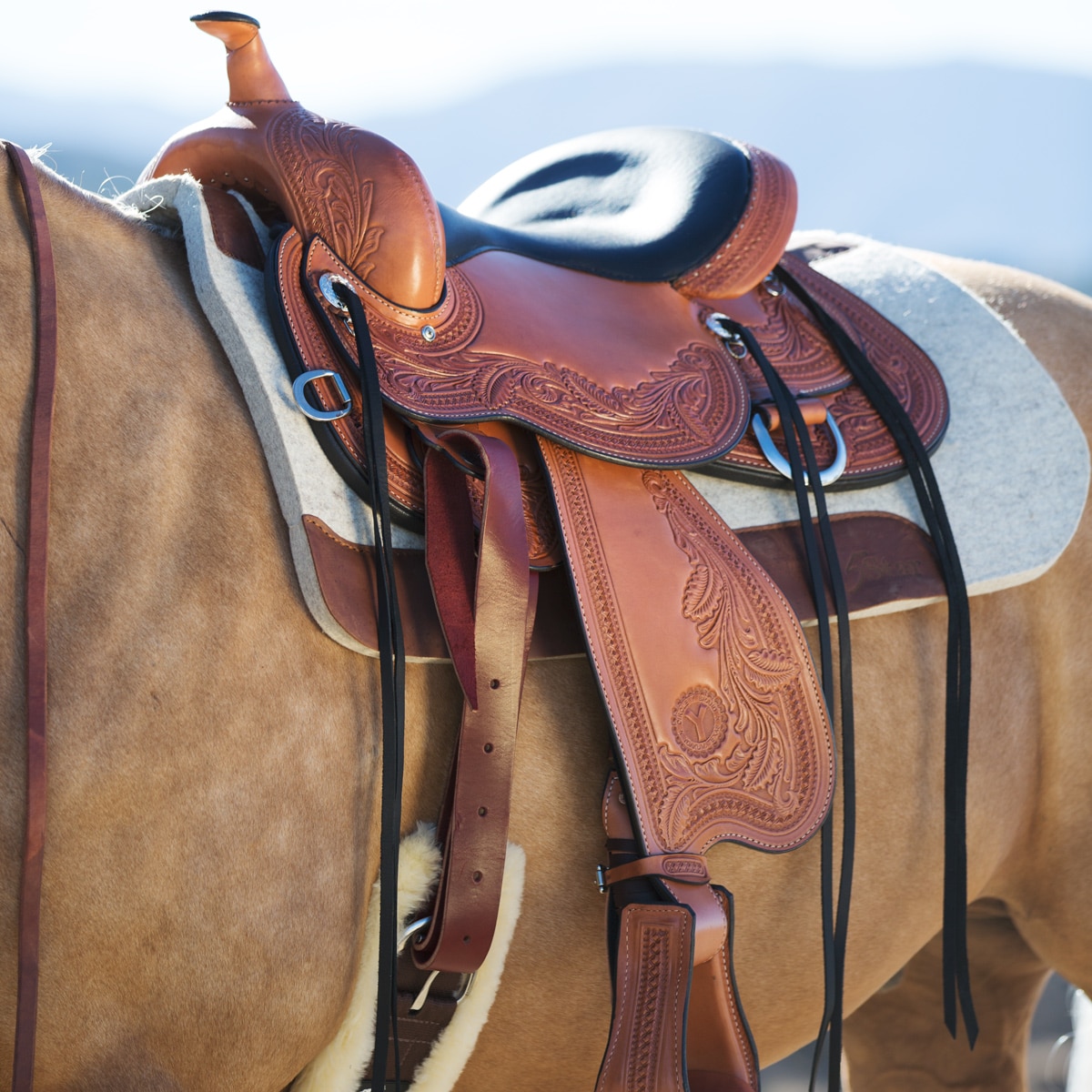
While English saddles allow for lightness and easy movement in and out of the saddle, the western saddle provides security and comfort to riders when spending long hours on a horse or traveling over rugged terrain.
Despite being called western, the saddle shape traces its roots back to the Spanish and colonial times. As America grew into the country it is today, so did western saddles. Each region developed its own style and crafted the saddles we ride in today. For example, trail riding saddles are designed for comfort, while barrel racing saddles are streamlined for speed.
Despite their variations, western saddles have similar terminology and are generally measured by “saddle bars,” either semi or full quarter horse bars. The gullet measurement varies for both, either full (7 inches across) or semi (6 ¾ inches across). This measurement is taken from concho to concho, which is the rosette found on both sides in front of the swell and horn of the saddle.
For the horse, even contact is desired between the bars of the tree and the horse’s back. There should be two to three fingers between the gullet of the saddle and the top of the withers. The back or flank cinch provides stability to the saddle and is meant to fit snug, but not tight, against the horse’s belly.
Saddle Fitting for a Western Rider
For the rider, the saddle should allow approximately 4” between the swell of the saddle and the front of your body. Your seat should fit to the base of the cantle but not push against the back. Long legs on a rider may require a larger seat size. This will help keep your legs from extending past the front of the fenders or pushing against the back of the swell of the saddle.
Saddle Fitting FAQs: Ask the Saddle Fitter Videos
Sweat is not a reliable source for determining saddle fit. Every horse moves and sweats differently, producing dry areas or uneven sweat marks on each side. The rider may also be sitting unevenly and can play a role in saddle sweat marks. Dry spots are not necessarily a bad thing and can mean air is able to travel along the scapula, allowing muscles to expand and contract. When in doubt, it’s always a good idea to have a saddle fitter come check the fit.
An adjustable gullet system is easier for the average rider to modify themselves. Adjustable gullets are great options if you have a young and growing horse, or if you’re leasing and want some flexibility for the future. Keep in mind that adjusting the gullet in the front of the saddle will not change the seat, width, or length of the saddle, so those areas may need additional attention.
If the girth is too close to the horse’s elbow, you are restricting movement of the shoulder (scapula). A good rule of thumb is one hand width (fingers pointing up) between the elbow and girth. Also, before tightening up all the way and getting on, walk your horse in a 20m circle to allow the saddle to naturally fit into place and then tighten up. Be mindful to not over tighten, too!
A saddle specifically measured for your unique horse and your own body is a detailed and technical process, but worth it. The saddle fitter will take lots of measurements, study how the horse and rider move, and build the saddle for the pair. Custom saddles are not financially feasible for every rider.
A correction half pad with shim inserts is a great tool that you can use to tailor and adjust the fit on different horses.